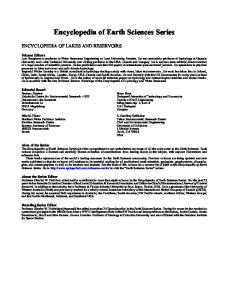The controlling factors of high suspended sediment concentration in the intertidal flat off the Huanghe River Estuary
- PDF / 2,459,830 Bytes
- 11 Pages / 595 x 842 pts (A4) Page_size
- 81 Downloads / 329 Views
The controlling factors of high suspended sediment concentration in the intertidal flat off the Huanghe River Estuary Bowen Li1, 3, Yonggang Jia1, 2*, J. Paul Liu3, Jianfeng Su3, 4, Xiaolei Liu1, 2, Mingzheng Wen5 1 Shandong Provincial Key Laboratory of Marine Environment and Geological Engineering, Ocean University of
China, Qingdao 266100, China 2 Laboratory for Marine Geology, Pilot National Laboratory for Marine Science and Technology (Qingdao), Qingdao
266237, China 3 Department of Marine, Earth and Atmospheric Sciences, North Carolina State University, Raleigh, NC 27695, USA 4 State Key Laboratory of Marine Geology, Tongji University, Shanghai 200092, China 5 Tianjin Center, China Geological Survey, Tianjin 300170, China
Received 21 May 2020; accepted 29 June 2020 © Chinese Society for Oceanography and Springer-Verlag GmbH Germany, part of Springer Nature 2020
Abstract
The Huanghe River (Yellow River) is known by its high suspended sediment concentration (SSC) in its river mouth tidal flat. However, the factors controlling the high SSC over there are not well understood. Therefore, we conducted 7-d hydrodynamic observations (water depth, wave height, and current velocity) and SSC measurements on the tidal flat off the Huanghe River Mouth. The data shows that in most of time, under the calm sea condition, the SSC ranges 0.1–3.5 g/L, and sediment discharge from the river is the main source. However, when hydrodynamics are enhanced in a tidal cycle and large-scale erosion occurs on the seafloor, resuspended sediment becomes the main source, and the SSC in the water column reaches 17.3 g/L. We find the suspended sediment flux is mainly controlled by the tidal current and Stokes drift, while the wave-induced shear stress could also affect the variation of suspended sediment flux. During the observation period, when sea under calm-rippled conditions, the current-induced resuspended sediment concentration (RSC) was greater than the wave-induced RSC. In contrast, in smooth-wavelet sea conditions, the wave-induced RSC was greater than the current-induced RSC, for instance, a single wave event was found to cause 11.8 cm seabed erosion within 6 h. This study reveals different controlling factors for the high SSC near a river-influenced tidal flat, and helps us get a better understanding of a delta's depositional and erosional mechanisms. Key words: Huanghe River (Yellow River), sediment re-suspension, sediment transport, wave, current, in-situ observation Citation: Li Bowen, Jia Yonggang, Liu J. Paul, Su Jianfeng, Liu Xiaolei, Wen Mingzheng. 2020. The controlling factors of high suspended sediment concentration in the intertidal flat off the Huanghe River Estuary. Acta Oceanologica Sinica, 39(10): 96–106, doi: 10.1007/s13131020-1679-9
1 Introduction Suspended sediments are an important part of sediment movement in estuarine-coastal waters. Their distribution, diffusion, and deposition have a major impact on ports, waterways, and ecological environments. Therefore, temporal changes in the suspended sediment concentr
Data Loading...











